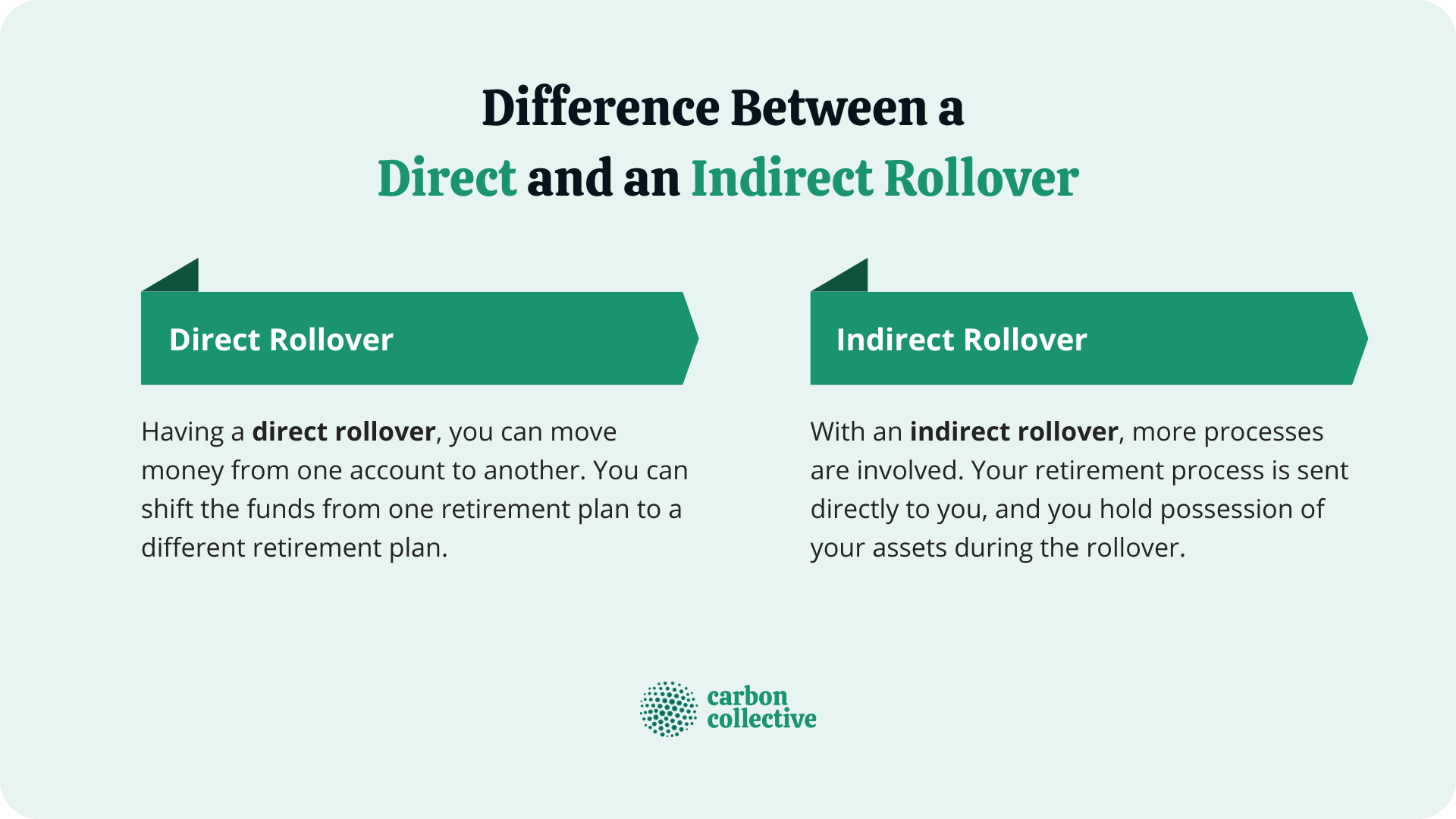Difference Between a Direct and an Indirect Rollover
You can do two types of rollovers with your 401k: direct and indirect.
Direct Rollover
Having a direct rollover, you can move money from one account to another. You can shift the funds from one retirement plan to another.
Thus, you never hold possession of your retirement assets in direct rollover and have no withheld taxes.
Indirect Rollover
With an indirect rollover, more processes are involved. Your retirement process is sent directly to you, and you possess your assets during the rollover.
The proceeds from an indirect rollover must be deposited into an approved retirement plan within 60 days.
You could be charged extra taxes and penalties if you deposit the money over 60 days.
However, assets distributed from employer retirement plans must be withheld by 20% to cover potential federal income tax.
Tax withholding may be waived if distributions are from an IRA (Individual Retirement Arrangement).

Rules for Direct Rollovers
The rules applied in a direct rollover include the following:
- Your retirement plan administrator directly sends your assets to another retirement plan or an IRA.
- No withheld taxes occurred in a direct rollover.
- No timetable to follow in terms of how long you carry out a direct rollover.
- Any amount of money may roll over.
- The 60-day rule does not follow.
Rules for Indirect Rollovers
With indirect rollovers, rules include:
- You receive the assets from your retirement plant typically through a check.
- You hold possession of your assets distributed from your employer's retirement plan.
- Financial institutions often withhold taxes by 20% when applying for an indirect rollover. The money is returned as a tax credit when the rollover process is completed.
- You have 60 days to roll over into another approved retirement plan or an IRA after the distribution is made to you.
- You will face a tax penalty over the regular tax withholding if you fail to deposit money from a retirement plan within 60 days.
- The indirect rollovers are limited to one every 12 months by the IRS.
The Bottom Line
A direct rollover is the most straightforward retirement plan rollover method. With a direct rollover, no taxes are withheld, and you never possess the assets.
You might opt for an indirect rollover if you want more control over how much money is moved and when it is moved. An indirect rollover also allows you to spread the distributions over time.
Thus, it is important to understand the rules before making a decision. Consult a financial advisor to help you make the best choice.
FAQs
1. What is direct rollover?
A direct rollover is a retirement plan rollover where your retirement assets are sent directly to your IRA by your current retirement plan administrator.
2. What is an indirect rollover?
An indirect rollover is a retirement plan rollover where assets are distributed directly to you, and you hold possession of your assets during the rollover.
3. What is the difference between a direct and an indirect rollover?
The main difference between direct and indirect rollover is that, in a direct rollover, you never possess your retirement assets, while in an indirect rollover, you do.
4. What are the benefits of direct rollover?
The benefits of direct rollover include no taxes withheld and no timetable to follow.
5. What are the benefits of indirect rollover?
The benefits of indirect rollover include more control over how much money is moved and when it is moved. An indirect rollover also allows you to spread the distributions over time.

